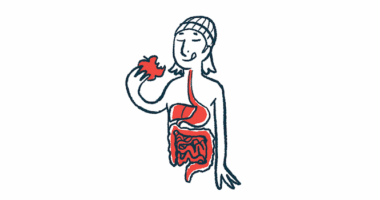Abcertin meets Cerezyme biosimilar criteria in Phase 1 study
Treatment could offer cost-effective option for Gaucher disease patients

Abcertin, a newly developed form of imiglucerase, was found to be equivalent to the approved enzyme replacement therapy (ERT) Cerezyme in a Phase 1 study involving healthy adults.
The two medications, which contain the same active ingredient, were found to have similar pharmacological properties and safety profiles, suggesting Abcertin may potentially be used as a less expensive biosimilar for the treatment of Gaucher disease.
The concept of a biosimilar is not unlike that of a generic medication, but the term biosimilar applies when the medications are biologics, or derived from living organisms. A biosimilar contains the same active ingredient as its brand name reference medication and is not expected to differ meaningfully in terms of safety and efficacy, but often comes at a lower cost.
This type of Phase 1 study is required by regulators to demonstrate that two medications have similar activity in the body, or are bioequivalent. Abcertin must meet this criteria to be officially recognized as a biosimilar according to global guidelines.
“These findings provide evidence that Abcertin could serve as a potential biosimilar to Cerezyme,” researchers wrote. “Abcertin may offer a more cost‐effective alternative, increasing accessibility for patients with GD [Gaucher disease].”
The study, “A Randomized, Double‐Blind, 2‐Treatment, 2‐Period, Crossover Phase 1 Study to Compare the Pharmacokinetics, Safety and Tolerability of 60 IU/Kg of Abcertin and Cerezyme in Healthy Volunteers Following a Single Intravenous Administration,” was published in Molecular Genetics & Genomic Medicine. It was funded by Abcertin’s developer, ISU Abxis.
Treatment already approved in several countries
In Gaucher disease, mutations in the GBA1 gene lead to a lack of the glucocerebrosidase (GCase), an enzyme that’s needed to break down a fatty molecule called glucocerebroside (Gb1). Consequently, Gb1 accumulates inside cells and causes a range of disease symptoms.
ERT is a standard-of-care Gaucher treatment aimed at supplying the body with a version of the missing GCase enzyme via regular infusions into the bloodstream.
Sanofi‘s Cerezyme is approved in the U.S. for people with type 1 Gaucher disease, ages 2 and older, who experience certain characteristic symptoms. In the European Union (EU), it’s also used for people with type 3 Gaucher who have significant non-neurological symptoms.
Cerezyme’s “high cost significantly limits access, particularly in resource-limited settings,” the researchers wrote. “Introducing biosimilars could improve treatment affordability and availability, thereby expanding access to effective therapies.”
Abcertin is approved for treating type 1 Gaucher in certain countries including South Korea, Algeria, Peru, Ecuador, Bolivia, Colombia, and Venezuela. It contains the same active ingredient as Cerezyme, and studies show it is safe and effective for people with Gaucher.
However, to be officially recognized as a biosimilar under World Health Organization guidelines, and approved as such by regulators in the U.S. and EU, studies in healthy volunteers must show that the two medications have similar pharmacological properties in the body.
Abcertin, Cerezyme found to have similar pharmacokinetic properties
That was the intention of the ISU Abxis-sponsored Phase 1 study (NCT04787887), which enrolled 42 healthy adults, ages 18-45, at a clinical site in Australia.
All participants received a single infusion of both Cerezyme and Abcertin, in random order and separated by about a month. Both treatments were given at a dose of 60 international units per kilogram of body weight — the highest approved initial dose of Cerezyme that’s used in people with Gaucher.
Overall, Abcertin and Cerezyme were found to have similar pharmacokinetic properties, meaning they moved into, through, and out of the body at similar rates and reached the same concentrations in the body, meeting the criteria for bioequivalence.
Abcertin demonstrated pharmacokinetic equivalence to Cerezyme, with a comparable safety, immunogenicity, and tolerability profile. These findings support its potential as an affordable biosimilar for GD treatment.
All reported side effects were mild or moderate in severity, and no serious adverse events occurred. Side effects occurred at the same rate with Cerezyme or Abcertin.
Neither treatment provoked significant immune responses, called immunogenicity. Neutralizing antibodies against the treatment were identified in one person after Cerezyme and in no people after Abcertin.
Overall, “Abcertin demonstrated pharmacokinetic equivalence to Cerezyme, with a comparable safety, immunogenicity, and tolerability profile,” the researchers wrote. “These findings support its potential as an affordable biosimilar for GD treatment.”





